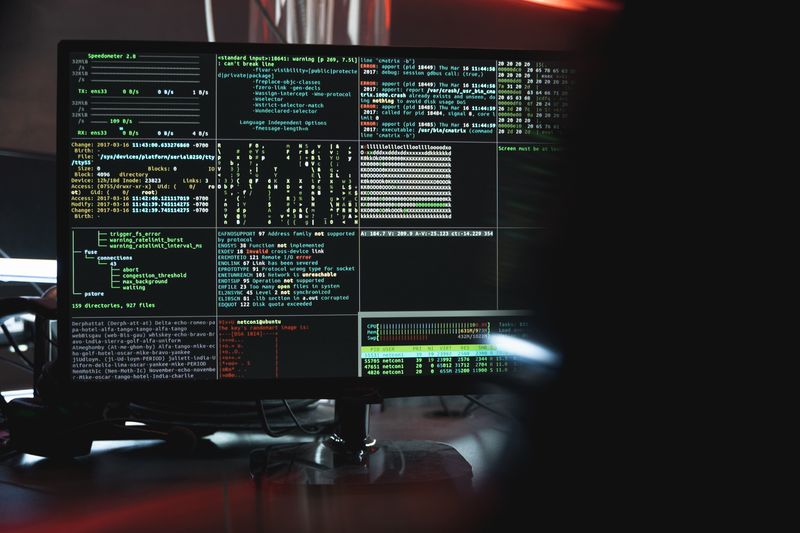Email Security: Protecting Against Threats in the Digital Age
Introduction
In the ever-evolving landscape of cybersecurity, it is important to stay updated on the latest threats and vulnerabilities that could compromise our digital well-being. While major security incidents often dominate headlines, there are many noteworthy stories that may slip under the radar. This week’s roundup includes a range of topics, from critical vulnerabilities in healthcare products to the emergence of new attack techniques. However, one common thread throughout these stories is the importance of email security.
Vulnerabilities in Healthcare Products
One of the most alarming stories this week involves vulnerabilities in healthcare products. A critical flaw in Medtronic’s Paceart Optima cardiac device data management product was discovered, which could potentially lead to denial of service attacks or remote code execution. While the vendor has released a patch and there is no evidence of exploitation in the wild, this incident underscores the urgent need for robust security measures in the healthcare industry.
Additionally, Siemens’ Sicam A8000 remote terminal units (RTUs) were found to have several vulnerabilities that could potentially destabilize power grids. These vulnerabilities highlight the potential impact of cyber attacks on critical infrastructure and the need for heightened security measures in industries that rely on such systems.
Email Security Testing
To address the growing concern around email security, web security firm ImmuniWeb has added email security testing to its free product. This new feature aims to help individuals and organizations identify vulnerabilities in their email systems, ultimately providing an opportunity to strengthen their defenses against phishing attacks and other email-based threats.
Phishing attacks are becoming increasingly sophisticated, making it imperative for individuals and organizations to constantly evaluate and improve their email security protocols. Tools like ImmuniWeb’s email security test can offer valuable insights into potential vulnerabilities that may have otherwise gone unnoticed.
New Attack Techniques
In the realm of new attack techniques, a member of the US Navy’s Red Team has released an open source tool named TeamsPhisher that allows users to deliver phishing messages and attachments to Microsoft Teams users. This tool bypasses security features and exploits the human element of social engineering. While Microsoft has downplayed the significance of this tool, it serves as a reminder of the importance of user education and awareness when it comes to email security.
Another concerning development is the discovery of over a dozen malicious packages in the NPM repository, which were used in supply chain and phishing attacks. These packages mimicked legitimate NPM modules, further underscoring the need for thorough vetting and verification processes in software development.
Editorial: The Importance of Email Security
Email has undoubtedly become an indispensable tool in both our personal and professional lives. It serves as a gateway to important information, communication, and online services. However, it is also a prime target for cybercriminals seeking to exploit vulnerabilities and gain unauthorized access to sensitive data.
The stories highlighted this week serve as a stark reminder of the pervasive nature of email-based threats. Whether it’s the potential compromise of critical healthcare products or the emergence of new attack techniques, the need for robust email security measures cannot be understated.
The Human Element
While technological advancements in email filters and security protocols have undoubtedly improved our defenses, it is important to recognize that the human element remains a critical factor in mitigating email-related risks. No amount of sophisticated security measures can completely eliminate the potential for human error or the success of social engineering tactics.
As individuals, it is crucial to remain vigilant and exercise caution when interacting with emails, particularly those that contain suspicious links or attachments. Additionally, organizations must prioritize employee education and awareness programs to help mitigate the risk of successful phishing attacks.
Technical Solutions
Alongside user education, robust technical solutions are also paramount. Companies should implement multi-layered email security systems that include advanced threat detection, encryption, and authentication mechanisms. Regular vulnerability assessments and testing should be carried out to identify and address any weaknesses in email systems.
Furthermore, the integration of artificial intelligence and machine learning technologies can significantly enhance email security by continuously analyzing patterns and behaviors to identify and thwart potential threats.
Collaboration and Regulation
The fight against email threats requires a collaborative effort from all stakeholders. Email service providers, cybersecurity firms, government agencies, and individuals must work together to share threat intelligence, best practices, and innovative solutions.
Additionally, policymakers should continue to prioritize cybersecurity regulations that hold organizations accountable for implementing robust email security measures. Stricter compliance requirements and stronger enforcement mechanisms can incentivize businesses to invest in secure email infrastructure and foster a safer digital environment.
Conclusion
Email security remains a critical component of our digital lives, and it is essential that individuals and organizations take proactive steps to protect themselves against evolving threats. The vulnerabilities in healthcare products, the introduction of email security testing, and the emergence of new attack techniques underscore the pressing need for comprehensive email security measures.
By combining user education, technical solutions, collaboration, and regulation, we can strengthen our defenses and mitigate the risks associated with email-based threats. Only through a multi-pronged approach can we ensure the safety and integrity of our digital communications in the face of an ever-evolving cybersecurity landscape.

<< photo by Tima Miroshnichenko >>
The image is for illustrative purposes only and does not depict the actual situation.
You might want to read !
- Breaking Encryption: The Illusion of Balancing Privacy and Security
- Uncovering Risks: Unauthenticated SQLi Vulnerability Found in MOVEit Transfer Software
- OWASP SwSec 5D Tool: Evaluating SDLC Maturity for Stronger Software Supply Chains
- Exploring the Weakness: Cisco Enterprise Switches Expose Encrypted Traffic
- Why Forcing Companies to Delete Algorithms Could Be the FTC’s Most Powerful AI Enforcement Tool
- Unveiling Vulnerability: Solar Power Products at Risk of Exploitation and Threatening Energy Organizations




